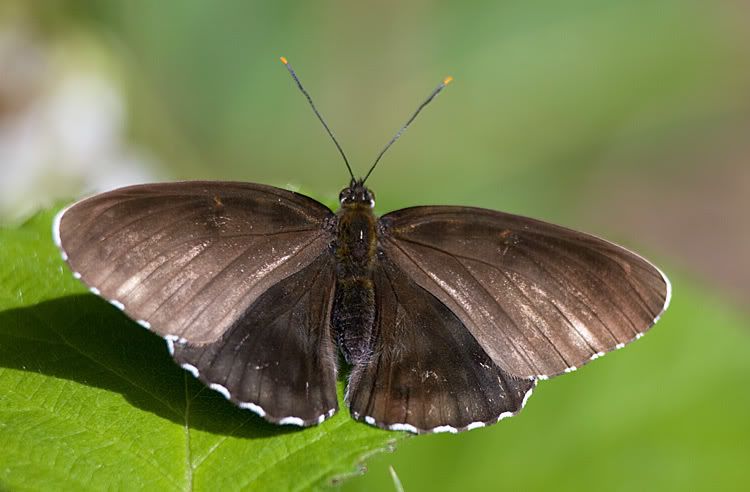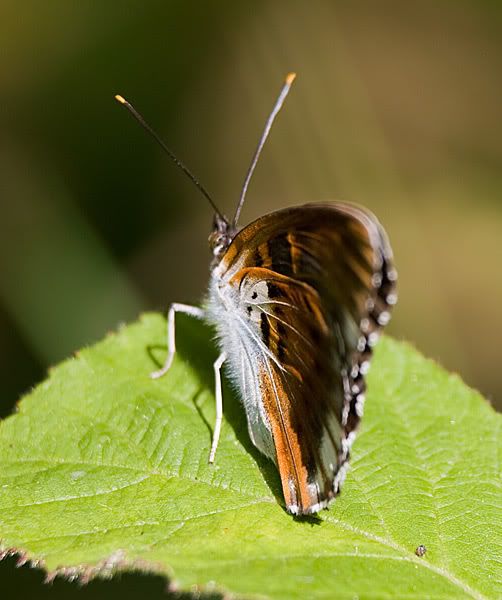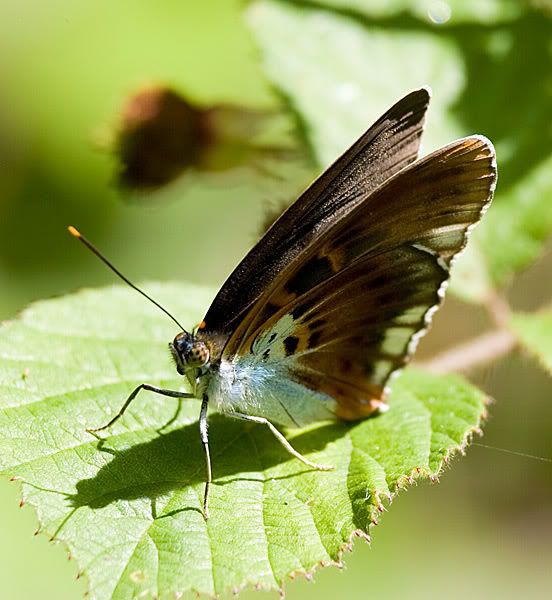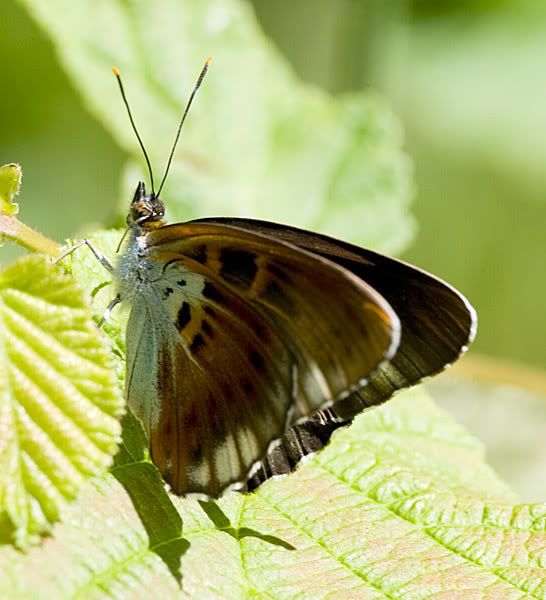Page 1 of 1
Black Admiral
Posted: Sun Jul 08, 2007 4:01 pm
by Martin
Posted: Sun Jul 08, 2007 5:29 pm
by Gruditch
Wow, I bet that had you guessing for a while.
Gruditch
Posted: Sun Jul 08, 2007 6:07 pm
by Bryan H
I think it would have done, Gruditch!
Fortunately an old hand was among the six of us who gathered round this specimen.
It was good to have bumped into Mike Young. Mike, the 'black' admiral posed plenty more after you left us!
Does anyone know the scientific name for this aberrent form?
Bryan
Posted: Sun Jul 08, 2007 6:30 pm
by Mike Young
Just my luck Bryan ! I did get one shot for the record though

Was very nice to meet Martin and yourself this morning

Posted: Sun Jul 08, 2007 6:56 pm
by Rogerdodge
That is a butterfly with a definate wow factor - well done!
Roger Harding
Posted: Sun Jul 08, 2007 7:16 pm
by Padfield
The pure black form is ab.
nigrina Weymer, 1884. Other forms, with more or less white on, have other names. Yours looks pretty good for ab.
obliterae. I've never seen any of them and it gives me a real thrill to look at these pictures!
A useful site for forms and aberrations is the Cockayne site. You will find white admiral here:
http://www.nhm.ac.uk/jdsml/research-cur ... ES=camilla
Guy
Posted: Sun Jul 08, 2007 11:12 pm
by Bryan H
I think that's nailed it, Guy!
Mind you, however useful those Cockayne illustrations are, it's another argument for having 'real' images on the species pages

Bryan
Posted: Mon Jul 09, 2007 6:09 am
by alex mclennan
Anyone visiting Fermyn Woods should keep an eye out for ab. obliterae which are regularly seen there. This pic was taken two years ago. (I may have posted it at that time - if so, apologies!)

Alex
Posted: Mon Jul 09, 2007 9:38 am
by Trev Sawyer
Yes, Fermyn Woods is where the 'abberant' photo I took (in the main section about White Admirals) was taken... and there was at least one other specimen on the wing there at the same time. I think Pete told me this form may be caused by temperature fluctuations during the pupal stage. With the weird summer we have had so far, there may be a few more about this season.
Trev















